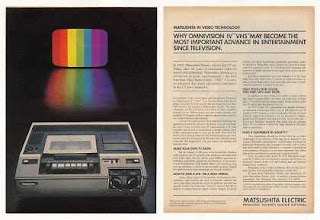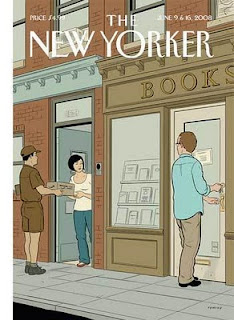I can go for years without reading anything by or about Stephen King, and then, for no reason whatsoever, I’ll start immersing myself in his works–mostly the older stuff (1970s-1980s). I think the newest of his novels I’ve read is Under the Dome, but I love to read and reread the novels and short stories I discovered in high school. (Anyone who knows me at all will not be surprised to know that I am eagerly awaiting November 8, when his science fiction novel 11/22/63 appears. Two of my interests–the John F. Kennedy assassination and Stephen King–will intersect in that book.)
Thunder crackles lightly outside right now, which is appropriate for the subject matter of this post. I’m offsetting it with The Beach Boys, my two-record vinyl copy of Endless Summer. (Right now, I’m typing with “Surfin’ USA” blasting from my turntable.)
Boredom at work was the impetus that launched my latest Stephen King binge. When I have no doctors’ reports to transcribe, and have completed the stack of ex parte orders, I spend the rest of the day re-indexing the medical documents that both Injured Workers and employers submit.
How do I approach this task? George Orwell described it eloquently in Chapter IV of 1984:
With the deep, unconscious sigh which not even the nearness of the telescreen could prevent him from uttering when his day’s work started, Winston pulled the speakwrite toward him, blew the dust from its mouthpiece, and put on his spectacles. Then he unrolled and clipped together four small cylinders of paper which had already flopped out of the pneumatic tube on the right-hand side of his desk.
To alleviate the boredom, I looked through the extensive disk collection of a co-worker, a woman in Indexing. (I have plenty of music disks, but wasn’t in the mood to listen to any music that day.) To my delight, she had the Books on Tape edition of The Stand. She had managed to put the complete reading on three MP3 disks.
I need to qualify my use of the word “complete” above. When King first published The Stand in 1978, entire sections went by the wayside. The editor was quite brutal with the blue pencil. (As a character once said on Lou Grant about an editor: “With him, War and Peace becomes War and you don’t even bleed!”) The original hardcover was 823 pages. I read the book during high school, over most of an Easter weekend. I thought initially that it was a run-of-the-mill science fiction novel, since the first section described an artificial influenza virus made by–who else?–the military. The virus has a 99.4% mortality rate, and I followed the main characters, part of the 0.6% immune to the virus, trying to bury their dead and reestablish their lives with fellow survivors. I followed intently as the survivors gravitated toward the Stand described in the title, as some follow the shadowy and faceless Antichrist figure Randall Flagg as he establishes a cruel law-and-order technology-efficient society in Las Vegas, punishing disobedience with (literal) crucifixion. Some follow a centenarian African-American woman from Nebraska named Mother Abigail, and attempt to establish a democratic society in Boulder, and struggle with waste disposal, getting the electricity going again, etc.
 |
| Hardcover dust jacket of The Stand: The Complete and Uncut Edition (1990). |
The version I listened to at work was the 1978 edition of The Stand. Only Stephen King would have the chutzpah to take a book that many reviewers said was already too long, and in 1990 reissue it. This time it was The Stand: The Complete and Uncut Edition, with 329 additional pages. I was living in Cincinnati when it came out, and decided to forego buying groceries to go down to B. Dalton downtown and buy it the week it appeared. The added tonnage turned out to be quite valuable. It filled in a lot of backstory, clarified questions that arose as a result of careless editing, and I enjoyed the book a lot more.
My apartment building manager, the myopic George Wagner, who would introduce me to the world of pulp conventions and the Old-Time Radio and Nostalgia Convention, went a step further. This epitomizes the person with way too much free time. He sat down with the 1978 edition of The Stand and the hardcover edition, ballpoint pen in hand, and marked what had changed, and how. (He later gave me this book as a birthday present, and it sits on my shelf between Signet paperbacks of the 1978 and 1990 editions, as a transition volume.) “All new,” “mostly new,” “about 35 words missing here” dot the pages, along with brackets and parentheses representing where the text changed one edition to the next.
I ordered a DVD of The Stand miniseries from Amazon.com recently, and it came in the mail on Saturday, waiting for me when I came home from work at the bookstore. This finally caused me to get off my ass and buy the appropriate cord to hook up my VCR/DVD to the TV. I stayed up late Saturday night and watched the first two parts, “The Plague” and “The Dreams.”
I was quite happy when Recorded Books issued an unabridged reading of It, which is my all-time favorite Stephen King novel. It is the story of a shape-shifting, child-killing monster that lives in the sewers and tunnels underneath a city in Maine. The monster goes on a killing spree every 30 or 40 years and then goes dormant. Seven outcast teenagers (a girl emotionally and physically–and possibly sexually–abused by her stepfather, a bookish Jewish boy, a stuttering aspiring writer whose brother was killed by this monster, and the only African-American kid in town are among the seven) come close to killing It in 1958, and make a pact to return to their city should It ever return. In 1985, murders and disappearances happen again, and they come back to do battle.
It was another huge book (1142 pages), but I read it over the course of almost one day–“a day” being a 24-hour period. I remember that it was the summer of 1987, and I was living in a furnished room above the Dairy Barn in Carthage (in the Mill Creek Valley, about six miles north of downtown Cincinnati) while working as a typesetter at Feicke Web. I started reading about midnight one Friday night, propped up in bed with the fan and the radio going full blast, and by morning being unable to put the book down.
Here is just how much the book drew me in. In mid-morning, I decided to escape the confines of my room (and the Carthage neighborhood–go to Google Maps and type in “6901 Vine St., Cincinnati, OH 45216” and you’ll completely understand!), so I took the 78 bus downtown and had an early lunch at the Frisch’s Big Boy on E. 6th St. downtown. My nose remained buried in It as I worked my way through a few glasses of Diet Coke, some fries and a cheeseburger.
One of the forms the monster possessing the city of Derry, Maine assumes is the form of Pennywise the Dancing Clown, making him more attractive to naive children who love the circus. After paying the bill and tipping the waitress, I made my way outside the restaurant–
–and damn near had a heart attack! Standing on the sidewalk was a street person who dressed head to toe in a one-piece clown suit, a white hard hat, and basketball sneakers. He carried a plastic Igloo in one hand. Despite this gala attire, he never spoke or smiled. (I asked the Westin Hotel’s barmaid about him once. She said she had no problem with him. He would come in, order a Coke, and sit by himself quietly drinking it, and then leave, and always left her a decent tip.)
Susie claims that the brief glimpse she saw of Stephen King’s It, the 1990 two-part miniseries, has given her an unshakable case of coulrophobia, an abnormal fear of clowns. I was afraid this would poison her enjoyment of The Rocky Horror Picture Show, since Tim Curry portrayed Dr. Frank-N-Furter in Rocky Horror and Pennywise in It. But when I took her to Studio 35 to see Rocky Horror, she loved every minute of it.
Susie and I plan to watch The Stand once she returns from Florida. I was a teenager when I first discovered Stephen King, and picked up an abandoned copy of Carrie at the free book giveaway shelf at the Washington County Public Library. I gloried in this Revenge of the Nerds on steroids, and rooted for the oppressed as she brought down the school building, and eventually the whole city, on her tormentors’ heads. Several friends have told me it is not a good idea to show The Stand or Carrie to Susie when she’s 13. I have never censored her reading, and never will. These works of Stephen King’s qualify as literature–my grandchildren will be studying them. University libraries include doctoral theses about King’s works.
My job is to keep Susie safe from the real horrors–of which there are many. I won’t waste my energy shielding her from the ones that reside on paper and ink, and which will vanish with the STOP button or by returning the book to the shelf (which never happens in our house anyway!).


